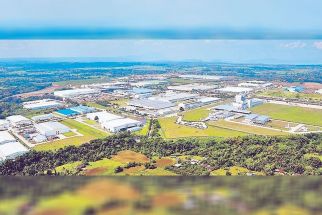IMF outlook for 2016: Philippine growth seen fastest in Asean
MANILA, Philippines – The economic growth in the Philippines would remain robust on the back of resilient domestic demand, the International Monetary Fund (IMF) said.
In IMF’s latest Regional Economic Outlook for Asia and the Pacific (REO), the Philippines is seen recording the fastest gross domestic product (GDP) growth among the Association of Southeast Asian Nations-5 (Asean-5) this year.
Retaining its growth forecast under the April 2016 World Economic Outlook (WEO), the IMF pegged the GDP growth for the Philippines at six percent this year and 6.2 percent next year.
The growth would be faster than Indonesia’s 4.9 percent, Malaysia’s 4.4 percent, Thailand’s three percent, and Singapore’s 1.8 percent.
“For the Philippines and Malaysia growth is expected to remain robust, underpinned by resilient domestic demand,” the multilateral lender said.
The GDP growth of the Philippines eased to 5.8 percent last year from 6.1 percent in 2014 due to weak global demand and lack of government spending. However, this was faster than Malaysia’s five percent, Indonesia’s 4.8 percent, Thailand’s 2.8 percent, and Singapore’s two percent.
Earlier, IMF resident representative Shanaka Jayanath Peiris said the Philippines would be driven by continued strong domestic demand and a modest fiscal stimulus in 2016.
Peiris said there is increased downside risks in the Philippines due to the continued economic slowdown in China, the volatile global financial market, and impact of El Niño.
“The economic outlook is one of the strongest in the region but subject to increased downside risks, including lower growth in China and the region, higher global financial volatility and capital outflows, and weather related disruptions,” he added.
Peiris said the country’s macroeconomic fundamentals remain strong while monetary conditions also remain supportive of growth.
“However, the Philippines’ capacity to respond if these risks materialize is substantial given its ample reserves and policy space, both monetary and fiscal,” Peiris said.
IMF sees the GDP growth in Asia slowing down to 5.3 percent this year and next year from 5.4 percent in 2015.
Despite a slight moderation, the lender believes Asia remains the engine of global growth,
While external demand remains sluggish, IMF said domestic demand continues to show resilience across most of the region, driven by low unemployment, growth in disposable income, lower commodities prices, and macroeconomic stimulus.
“Of course, Asia is impacted by the still weak global recovery, and by the ongoing and necessary rebalancing in China,” IMF director of the Asia-Pacific Department Changyong Rhee.
“But domestic demand has remained remarkably resilient throughout most of the region, supported by rising real incomes, especially in commodity importers, and supportive macroeconomic policies in many countries,” Rhee said.
It said China and Japan, the two largest economies in Asia, continue to face challenges.
China’s growth is forecast to drop to 6.5 percent this year from 6.9 percent in 2015 and 6.2 percent in 2017 while that of Japan is seen at 0.5 percent this year before dropping to -0.1 percent in 2017.
- Latest
- Trending




























